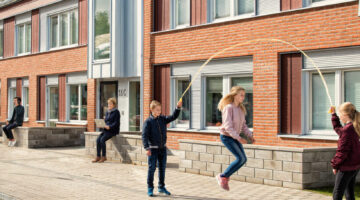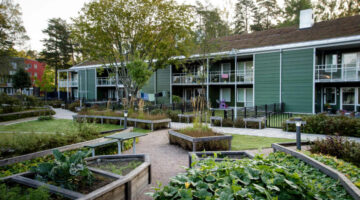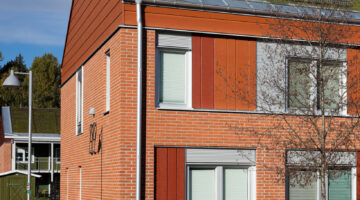




Vivalla renovation
Main objectives of the project
In 2010, ÖrebroBostäder, a public housing organization, initiated a strategic partnership agreement with construction company Skanska and architectural firm White Arkitekter to renovate the Vivalla district in Örebro. Residents of the housing complex actively participated in the planning process with the assistance of the Swedish Tenants Organisation. Workshops, including sessions for children, were organized to gather insights into residents' needs and preferences. Innovatively, Skanska employed 80 unemployed residents for the renovation and construction work through a unique bid specification. The Swedish Ministry of Employment collaborated with Skanska and ÖrebroBostäder by facilitating frequent informative meetings and interviews with residents. Additionally, the Municipality of Örebro supported ÖrebroBostäder by overseeing and approving the changes in the urban planning of the area.
Date
- 2023: Construction
- 2011: En proceso
Stakeholders
- Promotor: ÖrebroBostäder
- Architect: White Arkitekter
- Constructor: Skanska
- Örebro City Hall
Location
Country/Region: Örebro, Sweden
Description
Originally constructed as part of the Miljonprogrammet (Million Program) Swedish government public housing scheme in the late 1960s, the Vivalla neighborhood in Örebro has long struggled with high unemployment and various social issues. Despite its size, equivalent to that of a small town, Vivalla lacked essential amenities and services, and its physical isolation from the rest of the city compounded its challenges. However, through collaborative efforts led by ÖrebroBostäder, White Arkitekter, and Skanska, the entire neighborhood has undergone a transformative revitalization, creating a safer and more positive residential environment.
Initiating a strategic partnering agreement between Skanska and ÖrebroBostäder from 2010, the focus has been on refurbishing and renewing three blocks, with the project expected to conclude by 2024. Alongside renovating approximately 400 apartments, the partners have prioritized the development of green spaces and meeting areas within the neighborhood. Engaging in extensive dialogue with residents, solutions were identified to enhance safety and foster a sense of community. The project encompasses renovations, demolitions, new constructions, and significant alterations to the outdoor landscape. For example, by moving the entrances of selected buildings from the long eastern flank to the western flank, they created entrance spaces where neighbours can meet. By demarcating public and semi-private spaces more clearly, they facilitated the social “territories” that people need for their sense of identity, community, and security.
Energy efficiency was central too. It reduces the impact on the environment and lowers heating costs by installing solar panels, for example. The houses in Vivalla are more energy efficient than the building norm requires. They also tested the latest technology in a variety of climate-smart measures, such as the smarter FTX system where they preheat the outdoor air via ground heating holes in the ground. Moreover, green roofs where installed (with sedum coating)
Notably, the project aimed to introduce features unique to the neighborhood and attract new tenant demographics, aligning the population structure more closely with the municipality as a whole. ÖrebroBostäder demonstrated a commitment to change while preserving existing qualities such as low-scale, car-free walkways, and distinctive red-brick facades. Subsequent stages of the regeneration project have continued to replicate these patterns and designs throughout the district.
A significant achievement of the initiative is the Residents Builder program, providing work placements for unemployed residents in the renovation. Designed to reduce segregation and facilitate entry into the labor market, around 80 individuals have participated in placements with Skanska and subcontractors. Additionally, efforts to combat segregation have led to a more diverse population within the neighborhood, accompanied by the opening of new services such as the "Trainstation" education center, offering opportunities for skill development among young people in areas like music, photography, and digital literacy. The goal is that 70% of tenants must have an income. This will even increase diversity in the community.

